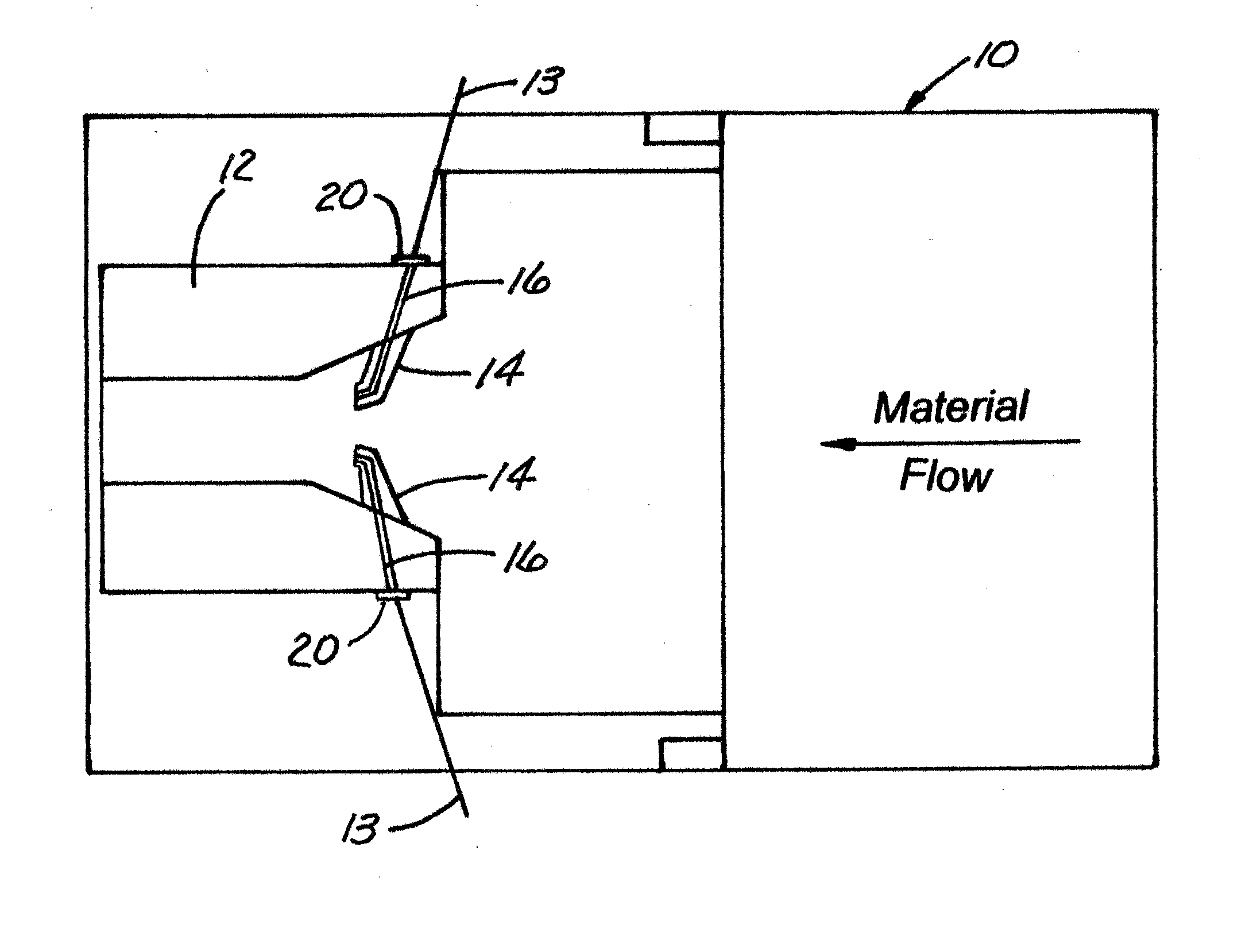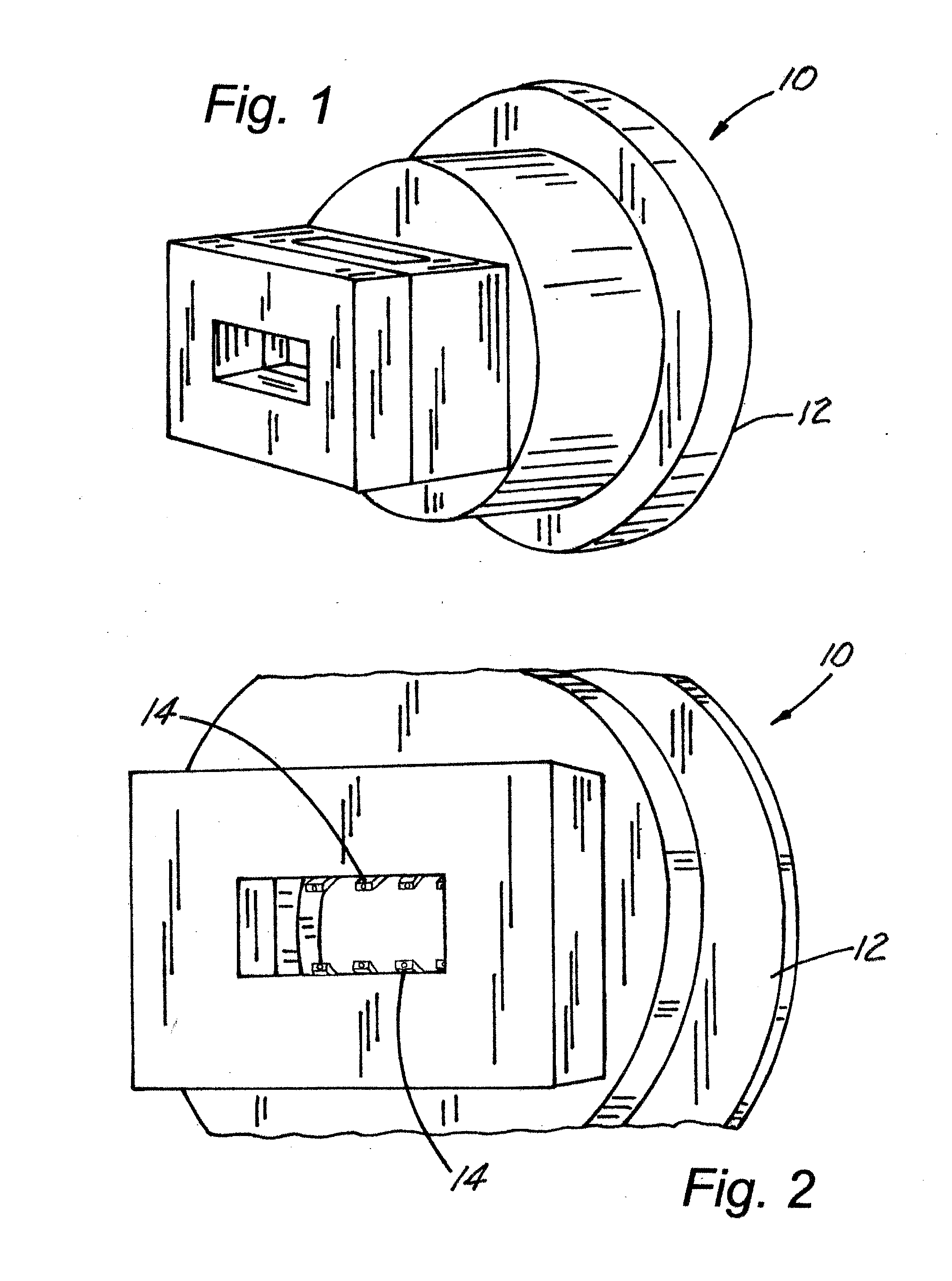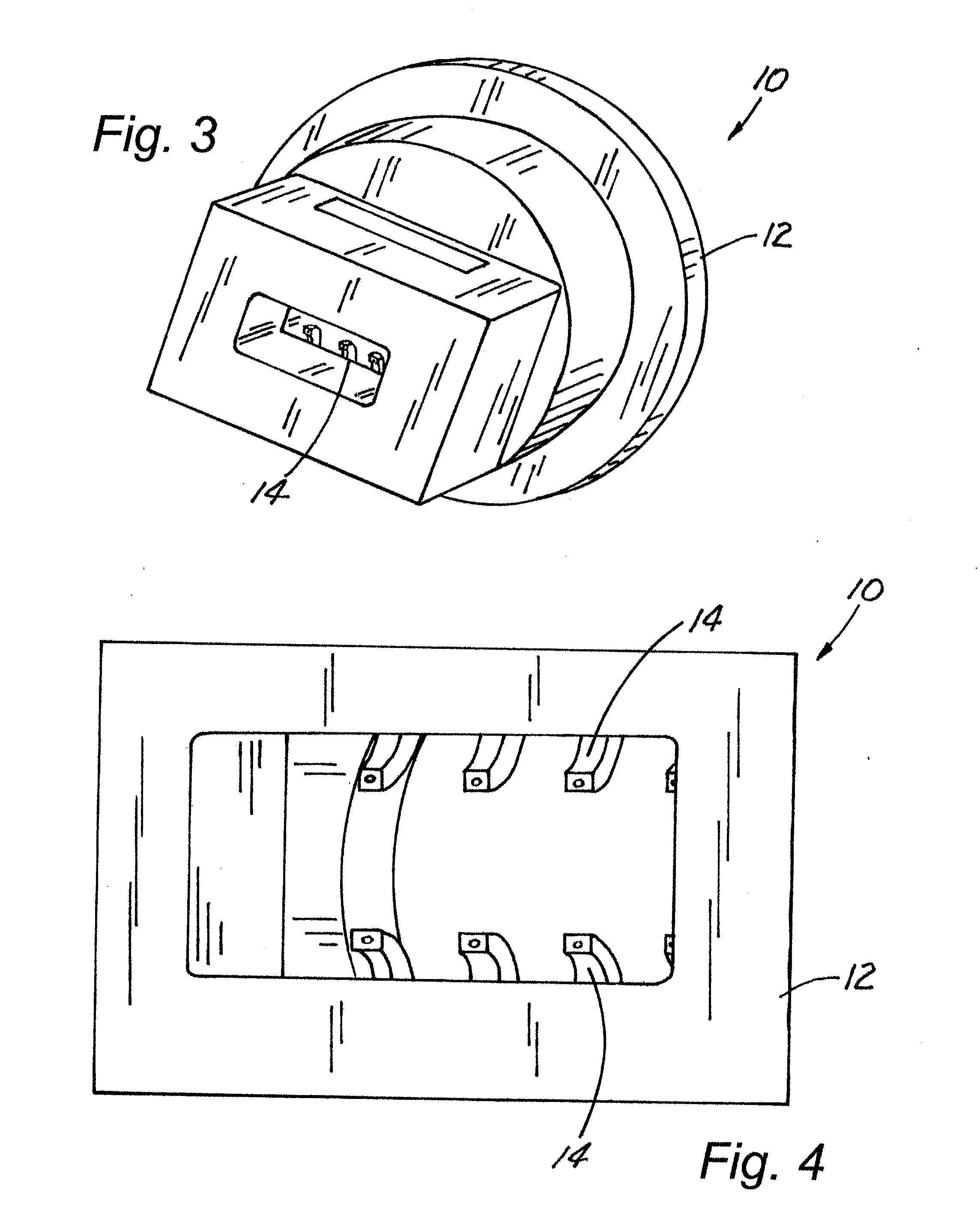Continuous Fiber Reinforced Biocomposites and Polymers
a biocomposites and fiber technology, applied in the field ofcontinuous fiber reinforced biocomposites and polymers, can solve the problems of all plastic lumber technologies plagued with performance, all lacked the strength and stiffness required for structural applications, and all plastic lumber technologies were plagued with performance, so as to reduce time-dependent creep deformation of product materials, increase strength and stiffness of products, and reduce creep deformation
- Summary
- Abstract
- Description
- Claims
- Application Information
AI Technical Summary
Benefits of technology
Problems solved by technology
Method used
Image
Examples
Embodiment Construction
[0022]As illustrated in FIGS. 1-12, the present invention is a device, indicated generally at 10, and a process of introducing continuous (organic or inorganic) fiber(s) 13 into random natural fiber reinforced polymer composites or all polymer-based profiles that are used in building material, construction, and / or outdoor living applications such as decking, framing systems for decking, fencing and other applications thereby increasing strength and stiffness while decreasing creep. Continuous reinforcing fibers 13 (organic or inorganic) are introduced into the product in the final forming extrusion die tool 12 using feeding fins 14 such that the continuous fibers 13 are placed below the surface of the finished shape and performs a function of increasing strength and stiffness while decreasing time-dependent creep deformation. The device 10 of the present invention can be retro-fitted into the existing production processes employed by companies currently in the market that produce na...
PUM
| Property | Measurement | Unit |
|---|---|---|
| strength | aaaaa | aaaaa |
| stiffness | aaaaa | aaaaa |
| area | aaaaa | aaaaa |
Abstract
Description
Claims
Application Information
 Login to View More
Login to View More - Generate Ideas
- Intellectual Property
- Life Sciences
- Materials
- Tech Scout
- Unparalleled Data Quality
- Higher Quality Content
- 60% Fewer Hallucinations
Browse by: Latest US Patents, China's latest patents, Technical Efficacy Thesaurus, Application Domain, Technology Topic, Popular Technical Reports.
© 2025 PatSnap. All rights reserved.Legal|Privacy policy|Modern Slavery Act Transparency Statement|Sitemap|About US| Contact US: help@patsnap.com



